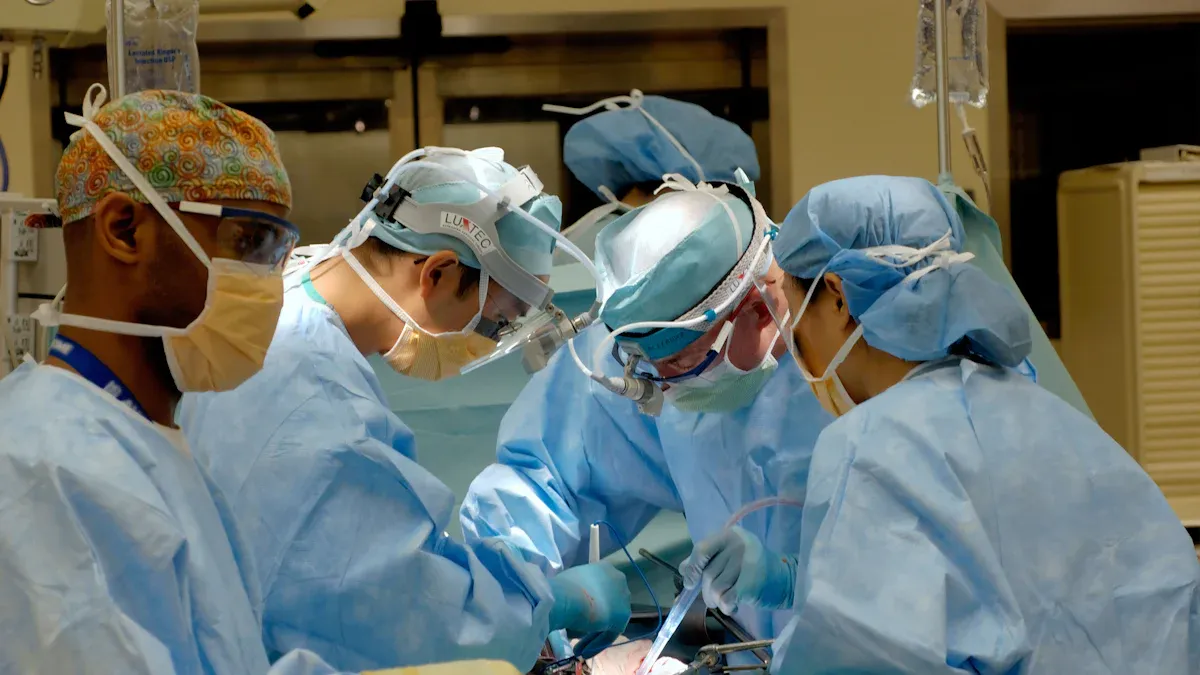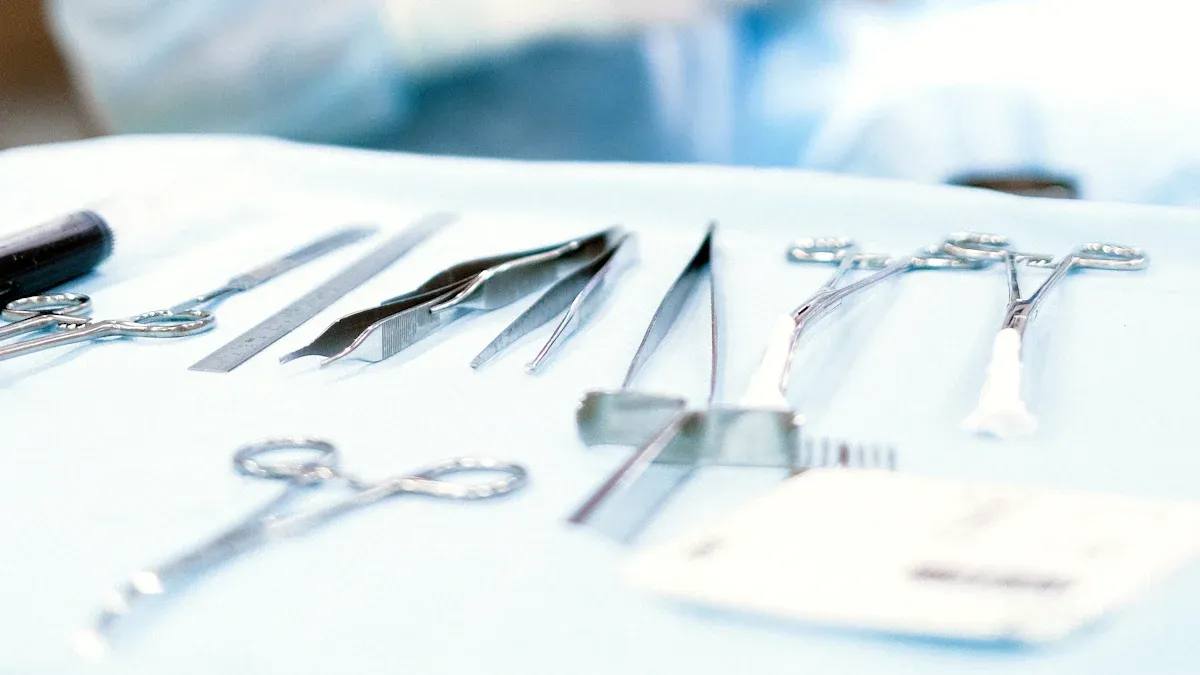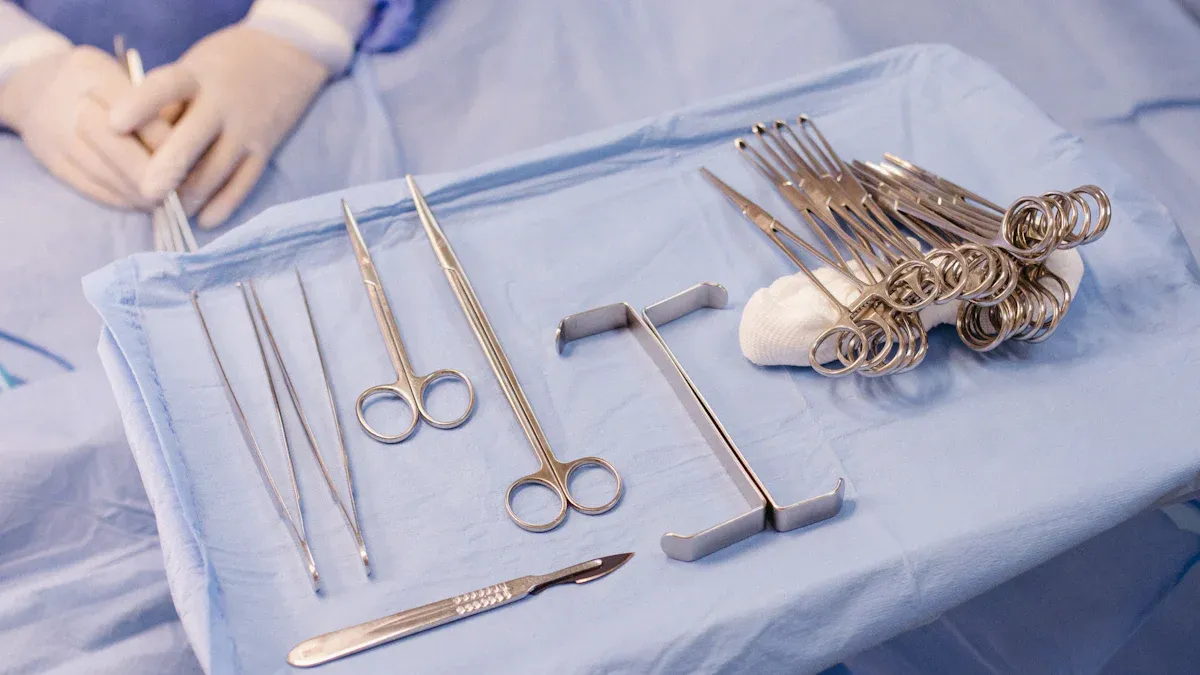Why Biopsies Are Safe and Do Not Spread Cancer

You might have heard the question, "Can a Biopsy Spread Cancer? The Science Behind This Widespread Myth." This belief causes unnecessary fear and hesitation. However, scientific research consistently proves that biopsies are safe and do not cause cancer to spread. For example, a study involving over 2,000 patients found that those who underwent biopsies had better outcomes and longer survival rates. Another analysis of 11 years of Medicare data revealed that patients who had biopsies lived an average of seven months longer than those who did not. These findings highlight the critical role biopsies play in diagnosing cancer and guiding treatment decisions.
Biopsies allow doctors to understand your condition better and create a personalized treatment plan. Without them, diagnosing cancer accurately becomes challenging. Trust the science and know that biopsies are a vital step toward recovery.
Key Takeaways
Biopsies are safe tests that help doctors find cancer. They do not make cancer spread.
Studies show people who get biopsies often live longer.
There are different kinds of biopsies, like needle or surgery. Each type helps doctors in different ways.
Learning how biopsies work can make you less scared. It can also help you trust your doctor.
Talking openly with your doctor about biopsies can calm worries. It helps you feel more informed.
The Purpose and Importance of Biopsies

What Is a Biopsy?
A biopsy is a medical procedure where a small sample of tissue is removed from your body for examination under a microscope. This sample can come from a lump, tumor, or any suspicious area that needs further investigation. Doctors use different types of biopsies depending on the situation.
Type of Biopsy | Description |
|---|---|
Needle Biopsy | A hollow needle removes small samples, including Fine Needle Aspiration (FNA) and Core Needle Biopsy (CNB). |
Fine Needle Aspiration | A thin needle withdraws fluid or small tissue pieces from a tumor. |
Core Needle Biopsy | A larger needle removes a bigger tissue sample for detailed analysis. |
Surgical Biopsy | Surgery removes part or all of an abnormal area or organ. |
Liquid Biopsy | Non-invasive methods collect tissue samples, often from blood, for cancer care. |
Each type of biopsy serves a specific purpose, helping doctors gather the information they need to diagnose and treat you effectively.
Why Are Biopsies Essential in Cancer Diagnosis?
Biopsies play a critical role in diagnosing cancer accurately. They allow doctors to determine the type, size, and stage of a tumor. Without this information, it becomes challenging to create an effective treatment plan. For example, core-needle biopsies have a sensitivity of 97–99% when guided by imaging techniques like ultrasound. However, open surgical biopsies are sometimes necessary to ensure a more comprehensive tissue sample.
Studies also show that artificial intelligence can improve the accuracy of biopsy interpretations. This technology helps doctors make consistent and reliable diagnoses, ensuring you receive the best possible care.
How Biopsies Guide Treatment Decisions
Biopsies provide essential details that influence your treatment plan. They help doctors decide whether surgery, chemotherapy, radiation, or a combination of treatments is most effective. According to Dr. Jeffrey E. Gershenwald, biopsies are vital for diagnosing and staging cancer, which directly impacts treatment decisions.
However, the quality of the biopsy sample matters. Tissue samples must contain at least 50% malignant cells to ensure accurate results. This precision allows doctors to tailor treatments to your specific needs, improving your chances of recovery.
Can a Biopsy Spread Cancer? The Science Behind This Widespread Myth
The Origin of the Myth
The idea that biopsies can spread cancer likely stems from rare cases of "tumor seeding." This occurs when a biopsy needle dislodges cancer cells, which then settle in nearby tissues. However, such cases are extremely uncommon. Experts emphasize that when cancer recurs after a biopsy, it is usually due to the tumor's natural progression rather than the biopsy itself.
Tumor seeding is rare and occurs in less than 0.005% of cases.
Advances in biopsy techniques have made this risk even smaller.
Understanding the origin of this myth helps you see why it persists despite overwhelming evidence to the contrary.
Scientific Evidence Proving Biopsies Are Safe
Biopsies are a standard and safe procedure used by doctors to diagnose cancer. Research consistently shows that they do not cause cancer to spread. For example, a study at the Mayo Clinic involving over 2,000 patients found that those who underwent biopsies had better outcomes and longer survival rates.
"Needle biopsies of early-onset lesions in the breast, thyroid, or lung allow us to diagnose cancer often before it has spread," said Dr. Eric Bernicker, a medical oncologist at Houston Methodist Cancer Center.
Additionally, a study on liver cancer biopsies demonstrated their safety and effectiveness. Out of 60 biopsy events, 80.4% confirmed malignancy, and major complications occurred in only 5% of cases. These findings highlight the reliability of biopsies in diagnosing cancer without significant risks.
Expert Opinions on Biopsy Safety
Medical experts agree that biopsies are essential for diagnosing and treating cancer. They also stress that the benefits far outweigh the minimal risks. Dr. Eric Bernicker explains that biopsies help detect cancer early, improving your chances of recovery.
Doctors take precautions to ensure your safety during a biopsy. They use advanced imaging techniques to guide the needle and minimize any potential risks. These measures make biopsies one of the safest diagnostic tools available. Trusting your healthcare provider and understanding the science can help you feel more confident about this procedure.
Types of Biopsies and Their Minimally Invasive Nature

Needle Biopsies
Needle biopsies are among the least invasive methods for collecting tissue samples. Doctors use a thin or hollow needle to extract small amounts of tissue from a suspicious area. This technique minimizes discomfort and recovery time. You may encounter two common types of needle biopsies:
Fine Needle Aspiration (FNA): A very thin needle removes fluid or small tissue fragments. This method works well for areas like the thyroid or lymph nodes.
Core Needle Biopsy (CNB): A slightly larger needle collects a more substantial tissue sample. This provides more detailed information for diagnosis.
Doctors often use imaging tools like ultrasound or CT scans to guide the needle. These tools ensure precision and safety during the procedure. Needle biopsies are quick, usually performed in outpatient settings, and require little to no downtime.
Surgical Biopsies
Surgical biopsies involve removing part or all of a suspicious area through a minor surgical procedure. This method is more invasive than needle biopsies but provides a larger tissue sample. You might need a surgical biopsy if other methods cannot provide enough information.
There are two main types:
Incisional Biopsy: Only a portion of the abnormal tissue is removed for analysis.
Excisional Biopsy: The entire suspicious area or tumor is removed.
Doctors perform surgical biopsies in a sterile environment, often under local or general anesthesia. While recovery may take longer than with needle biopsies, this method offers a comprehensive view of the tissue.
Other Common Biopsy Techniques
Some biopsies use innovative, minimally invasive approaches. These techniques reduce risks and improve patient comfort. Examples include:
Liquid Biopsy: A simple blood test detects cancer cells or DNA fragments. This method is non-invasive and useful for monitoring cancer progression.
Endoscopic Biopsy: A thin, flexible tube with a camera collects tissue samples from internal organs like the stomach or lungs.
Tip: Ask your doctor about the best biopsy option for your situation. Each technique has unique benefits tailored to specific conditions.
These advanced methods highlight how modern medicine prioritizes safety and accuracy in cancer diagnosis.
Addressing Common Concerns and Misconceptions
Will a Biopsy Make My Cancer Worse?
You might worry that a biopsy could make your cancer worse. This concern often stems from the myth that biopsies can spread cancer. However, modern medical research shows that this is not true. Doctors use advanced techniques to ensure biopsies are safe. The risk of complications, including cancer spreading, is extremely low. For example, tumor seeding, where cancer cells spread during a biopsy, occurs in less than 0.005% of cases.
Biopsies help doctors diagnose cancer early, which improves your chances of recovery. Without a biopsy, it becomes harder to determine the type and stage of cancer. This information is critical for creating an effective treatment plan. Trust your healthcare provider to guide you through this process safely.
How Do Doctors Ensure Biopsy Safety?
Doctors follow strict safety protocols to protect you during a biopsy. They use advanced imaging tools, such as ultrasound or CT scans, to guide the needle precisely. This reduces the risk of damaging surrounding tissues. Sterile techniques also prevent infections.
The FDA provides guidance on biopsy safety, emphasizing the importance of assessing risks and benefits. For example, biopsies may not be performed if they do not contribute to treatment decisions. This approach minimizes unnecessary procedures and ensures patient safety.
Doctors also monitor you closely during and after the procedure. If you have concerns, ask your doctor about the steps they take to ensure your safety.
What to Expect During and After a Biopsy
Understanding what happens during and after a biopsy can ease your anxiety. During the procedure, you will likely feel minimal discomfort. For needle biopsies, doctors use local anesthesia to numb the area. Surgical biopsies may require general anesthesia, depending on the situation.
After the biopsy, you might experience mild soreness or bruising. These symptoms usually go away within a few days. Your doctor will provide instructions on how to care for the biopsy site. Follow these guidelines to promote healing and reduce the risk of complications.
Tip: Keep an open line of communication with your doctor. If you notice unusual symptoms, such as excessive bleeding or swelling, contact them immediately.
Biopsies are a safe and essential step in diagnosing cancer. Knowing what to expect can help you feel more confident about the procedure.
Biopsies are safe and play a vital role in diagnosing and treating cancer. They provide doctors with the information needed to create effective treatment plans tailored to your condition. Without them, identifying the type and stage of cancer becomes much harder.
You might still wonder, "Can a Biopsy Spread Cancer? The Science Behind This Widespread Myth." Rest assured, modern medical research confirms that biopsies do not cause cancer to spread. Trust your healthcare provider to guide you through this process. If you have concerns, ask questions and seek clarification. Open communication ensures you feel confident and informed about your care.
FAQ
What happens if a biopsy result is inconclusive?
If your biopsy result is inconclusive, your doctor may recommend additional tests or another biopsy. This ensures they gather enough information to make an accurate diagnosis. Inconclusive results do not mean you have cancer; they simply indicate the need for further investigation.
How long does it take to get biopsy results?
The time varies depending on the type of biopsy and the lab's workload. Most results are available within a few days to a week. Your doctor will inform you when to expect the results and discuss them with you as soon as they are ready.
Are biopsies painful?
Biopsies usually cause minimal discomfort. Doctors use local anesthesia to numb the area for needle biopsies. For surgical biopsies, general anesthesia may be used. After the procedure, you might feel mild soreness, but it typically subsides within a few days.
Tip: Let your doctor know if you feel anxious about pain. They can help manage your concerns.
Can I resume normal activities after a biopsy?
You can often return to normal activities within a day or two after a needle biopsy. Surgical biopsies may require more recovery time. Follow your doctor’s post-procedure instructions to ensure proper healing and avoid complications.
What should I do if I notice unusual symptoms after a biopsy?
Contact your doctor immediately if you experience excessive bleeding, swelling, or signs of infection like fever. These symptoms are rare but require prompt attention. Always follow your doctor’s care instructions to minimize risks and promote recovery.
Note: Keeping an open line of communication with your healthcare provider ensures your safety and peace of mind.
See Also
A Simple Explanation Of Extrahepatic Bile Duct Cancer
Exploring The Symptoms And Causes Of Anal Cancer
Symptoms And Treatments Of Duodenal Cancer Explained
An In-Depth Overview Of Various Cancer Types
Essential Information Regarding Basaloid Squamous Cell Lung Cancer
